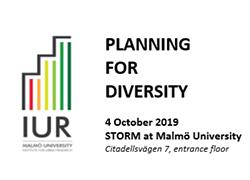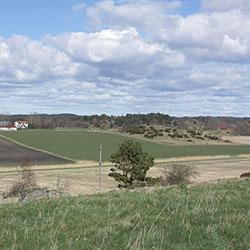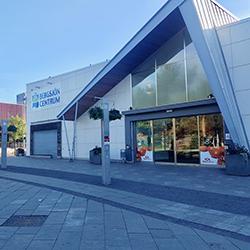As many other countries, Denmark has its countryside municipalities where depopulation is an everyday reality. At the same time, urbanisation strengthens the economies and attraction of the major cities, like Copenhagen, Odense and Aarhus. This increasing urban rural divide is a kind of ‘wicked problem’ that has gained considerable attention, with the aim to develop a more dynamic relationship. Local and regional planning are important drivers and policy tools.
In the past few years, the Danish municipalities of Thisted, in north-western Jutland, and Bornholm, the Baltic Sea island, have undertaken innovative new planning initiatives developed to strengthen the existing opportunities. In Thisted, the negative population changes became a starting point for a new strategic planning process, including a wide range of actors and the planners of the municipality.
Anne Tietjen, architect and Associate Professor of Landscape Architecture and Urban Planning at University of Copenhagen, has followed the processes closely, placing the lessons learned into empirical and theoretical contexts, which she presented at an Urban Research event at Mistra Urban Futures on 7 June 2017.
The theoretical context is about strategic planning as a translational process, and defining planning as a normative model with an ongoing interaction between projects, actors and plans. An overview can be found in an open access article by Anne Tietjen and Gertrud Jørgensen: Translating a wicked problem: A strategic planning approach to rural shrinkage in Denmark.
Back to Thisted, a 1100-square-kilometre municipality of about 45.000 inhabitants, and one of three municipalities that were selected for a planning initiative called ‘Land of Opportunities’, partly funded by a Danish charity, Realdania. Between 2007 and 2012 some € 4,5 million were invested in strategic projects in three coastal villages of the municipality, all based on the initial goals of more settlements and more tourists – objectives that were defined through a series of meetings with the inhabitants. 600 people took part, 45 ideas were presented and developed into six, one of which became ‘The good life at the seaside’.
Participation and local ownership of the projects were important success factors, leading also to branding and new networks within the municipality. Thisted was well known within the surfer community even before the projects, and as the local profile has been strengthened, it has actually had a positive impact, as people have chosen to settle down in the municipality, thanks to the surfing opportunities.
The relational role of planners as strategists and facilitators of the process has been highlighted by the Thisted case study. The ‘wicked problems’ can be dealt with through interdependent interactions with actors and stakeholders and lead to new solutions in a constantly developing process.
Furthermore, the Danish projects and experiences contribute to important discussions about the relationships and imbalances between urban and rural areas, between centre and periphery. The results of the research of Anne Tietjen and colleagues also add arguments to the idea of strengthening place-based potential and opportunities rather than a re-distribution of resources on a regional or national level.
The ‘Urban Research’ seminar, in which Anne Tietjen presented her findings, was part of the Mistra Urban Futures project ‘Planning methods for sustainable local and regional development. The project is basically a pre-study, looking at urban-rural and centre-periphery polarisations and planning tools that are better adapted and more useful to work with the imbalances.
See the project page at Mistra Urban Futures’ website.
Project leaders: Nils Björling, Chalmers University of Technology, and Hanna Blomdahl, Region Västra Götaland.
Pictures: Anne Tietjen, photo: David Jönsson; top right: Klitmøller, Thisted municipality, photo: Poul Krogsgård, Wikimedia Commons; bottom Nr Vorupør photo by Wikimedia Commons CC BY-SA 3.0








